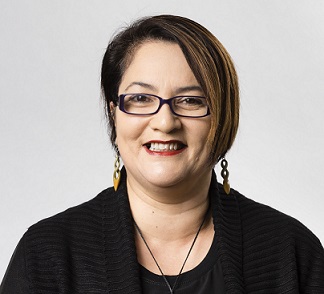Kia hiwa rā, kia oho, kia tū, kia mataara!
Kua takoto te mānuka, hei kawe ake.
Ka tau te mauri ora!
Nekeneke noa mai ana a Rūaumoko
i te kōpū o te whenua.
Mataku tonu mai ana ngā mokopuna a Tāne-toko-i-rangi.
Poutūterangi, poua ki runga
Poutokomanawa, titia ki raro
Kua rauika te Matatini ki te Matau o te Ika a Māui. Kārohirohi ana te kahurangi o Te Wai – Pounamu e.
Tihei mauri ora.
February marked six years since the tragic earthquakes that rocked our Canterbury whānau, and I can’t think of anything more fitting to commemorate those who lost their lives than Oi Manawa, the Canterbury Earthquake National Memorial. The name was gifted by Ngāi Tahu and means the tremor of the heart.
Ngāi Tūāhuriri and Te Rūnanga o Ngāi Tahu played a significant role in the development and unveiling of Oi Manawa and I would like to thank everyone who was involved in the memorial development and the many months of planning for the unveiling ceremony.
February wasn’t only a time for commemoration, it was also about celebration, and it was great to be able to go to Te Mātinitini and support the four kapa hakā teams from Te Waipounamu. Everyone in the crowd was impressed by their routines and I was very proud of all the participants. I would also like to congratulate all those who completed Aoraki Bound in February. Aoraki Bound is a mental and physical challenge and it is great to see another rōpū learn about Ngāi Tahutanga and be pushed to the edge. I know there will be some future tribal leaders to come out of this year’s alumni.
As I mentioned in my last column, 2017 is a very exciting year for Ngāi Tahu as it marks the significant milestone of 20 years since the Deed of Settlement. During the year we’ll be reflecting on our journey to settlement and recognising and paying tribute to those people past and present who dedicated their lives to progress the claim over many years. Watch this space as we tell some of those stories – but for now, let’s remember some of the key historical events that have happened in the month of March that contributed to our Settlement. In 1859 the Kaikōura Deed was signed, this was one of the key land sales that helped Ngāi Tahu develop our Settlement. In addition, March was the month the Ngāi Tahu Māori Trust moved into Te Waipounamu House on Armagh Street. I’m sure many whānau have good memories associated with that building and I hope one day Te Rūnanga o Ngāi Tahu will return to a building in the central city.
In February, I also attended the Iwi Chairs Forum in Waitangi. The Forum provided a great opportunity for iwi from across Aotearoa to come together and discuss some of the pressing issues for Māori. Some of the big discussions centred on freshwater, iwi engagement with the Crown and the Children, Young Persons and Their Families (Oranga Tamariki) Legislation Bill. Iwi Chairs will continue to strongly advocate for Māori on these, and other, kaupapa.
You will also be aware that Te Rūnanga o Ngāi Tahu has paused the election process for the Kaiwhakahaere – a decision made by the board and announced by Arihia in late February. It has been more than two decades since the formation of TRoNT, and the departure of Tā Mark from the board late last year, who has admirably filled the Kaiwhakahaere role almost since TRoNT’s inception, was seen as an ideal opportunity to review the role.
Tā Mark leaves some big shoes to fill and a key part of this process is to review the Kaiwhakahaere role to identify whether it is appropriately structured and resourced as we enter the next phase of our iwi development, and to also identify a process that supports the smooth transition for the new Kaiwhakahaere into what is a crucially important role for Ngāi Tahu.
I hope everyone takes the opportunity to get out into the beautiful autumn air and spend some time outside with whānau before we head into winter.
Lisa Tumahai.
